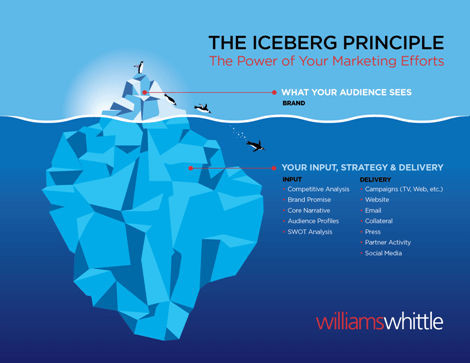Many of our new client relationships start with a marketing audit. It’s a natural first step when they want us to identify their marketing priorities and create any type of campaign moving forward. And it really is the most critical step because we look back at the past to determine what was working and what was not; but not in the sense of evaluating results, more evaluating the process that was followed.
An audit is a helpful tool that uncovers whether you’re answering these basic marketing questions before you create and deploy any type of communication:
- Who are we talking to? (your audience)
- How are we reaching our audiences?
- What are we talking to our audience about? – What do they already know? What do they not know? What will tug at their heartstrings the most?
- Why are talking to our audience? – is it relevant, compelling or interesting? Why should they believe us?
The main benefit in having a third party conduct your audit, whether it’s an agency like us, or another department within your organization, is that the results will be objective and not biased. An agency can also compare and contrast their experience with other like organizations and add a dose credibility that is sometimes needed to spur change once you’re ready to implement.
Where to start
Audits need to encompass as many facets of input, strategy and delivery as possible.

The nitty-gritty
How do you analyze all of those items? You’ll need to use many ways of collecting the data you need:
- Interviews
It’s always helpful to hear feedback firsthand. Pull out a notepad or bring a laptop because you’ll want to document every word that gets thrown your way. This is a key tool in understanding the way the internal decision-making process goes. For example, do the employees executing the communications have strong views that are not being heard?
- Surveys
Sometimes, you’ll want to get input from and make larger groups of people feel like they are involved/have a say in the auditing process – employees, donors, members, leadership committees – and a survey is an easy and fast way to do this. I recommend asking questions about communications processes within specific situations so you can get helpful guidance for the future. For example, ask about a singular execution (like a social media campaign or the creation of a brochure) to see what was the most memorable part of the process. If there was discord during the messaging part of the process, this could raise a red flag.
- Document Review
Gather up all of these resources and start mulling through it. But, what are you looking for? You’ll need to come up with a “report card” of some sort so you’re grading the right things, like the creation process, the execution, the takeaway for the eventual audience. We have created guidelines for auditing all sorts of communications vehicles, like this one for your newsletter.
- Stat Review
When you look at the results from measurable marketing activities, like social media campaigns, media coverage, or fundraising drives, you can probably tell a lot more than just “was it successful or not.” For example, why did one post have more likes than another? Was it the type of content – video vs. picture? These helpful tidbits will be useful fodder for new marketing initiatives.
- Research
You should definitely do some first-hand research, such as evaluating competitors, doing a SWOT analysis or collecting best practices. Looking on the outside is equally as important to looking on the inside.
- Technology assessment
Are the ways you deliver your marketing messages the most effective ones? Receiving input on the pros and cons of a tool is also instrumental in making future recommendations. For example, we had a client who was using Google to send their monthly e-newsletter. While it was free, they had no experience in HTML and the emails were poorly designed plus they had no analytics on who was opening or interacting with their message. For a nominal fee, (which we recommended they prioritize) they could use an email service that had attractive, customizable templates and gave them engagement data. From there, they could use the data to reach out to people really “interested” in their cause.
Some aspects to look for when conducting a communications audit include:
- Brand reputation/consistency – look for consistency in the tone of voice, photography, personality, logo and graphics, images and colors, typography and fonts.
- Quality and potential – does your messaging and external communication strategy represent a great value proposition?
- Conversions and leads – define what a conversion means for each element; does this mean downloads, subscriptions, donations, purchases, etc.
- Leading opportunities – is the content appropriate for the needs of your audience in every step of the customer journey? Are you connecting with your audiences on the right channels?
- Customer engagement – are your communications strategies emotional enough? Are your personas still accurate? Does your tone resonate with your target audience?
The final product
After all of the findings have been reviewed, scored and evaluated, an objective point of view on your marketing can be developed. From there, you should get a specific outline of recommendations to meet the initial purpose for the audit. This is the most important step of all and where most of the “thinking” will occur. If you don’t complete an audit with a definitive way forward, then it was just an exercise in evaluation. Don’t be afraid or intimidated by the results. Even if you don’t agree, find a way to incorporate them into your marketing plan in some way.
We’d love to help with your communications audit, contact us to see how we can provide ideas that generate change for your nonprofit.


